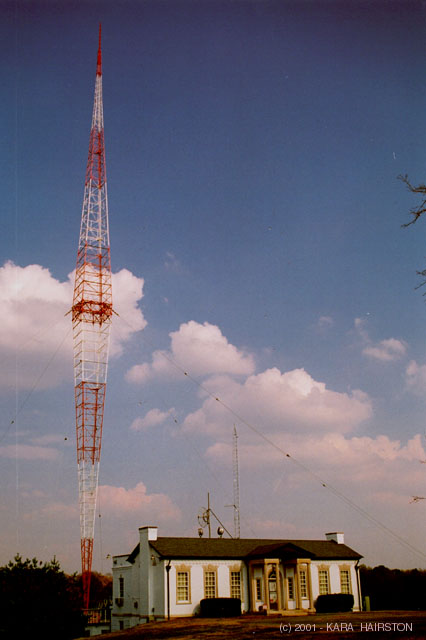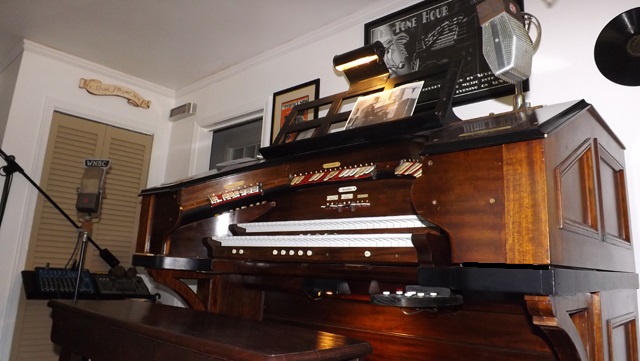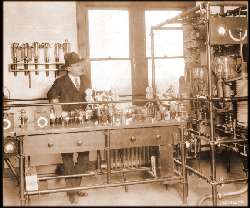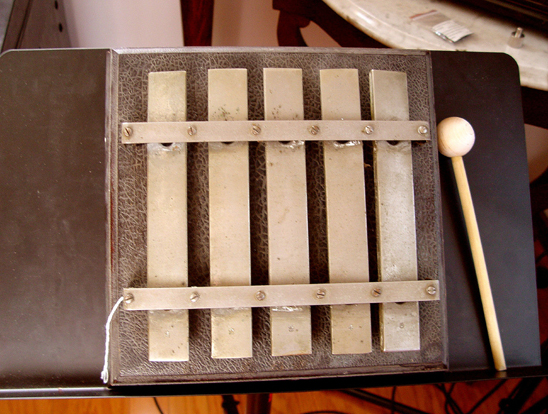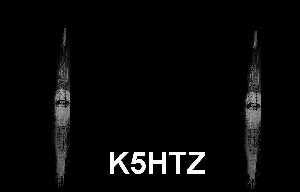 |
RECOMMENDED LINKS |
|
GALLERY NAVIGATION
LIBRARY, SPONSORS AND BROADCASTING
OTHER WEB SITES BY THIS AUTHOR
History of
Gentilly Terrace School
in New Orleans
History of New Orleans'
West End
THE MUSEUM OF YESTERDAY |


While the Museum Of Yesterdy website provides a way for museum founder John DeMajo to display his vast antique communications collection with the intrested public, it should be noted that the site serves as an educational and informational resource in that it visualizes the entire development of electrical and electronics communications in America.
At its initial founding, America was made up of many cultures and nationalities, all of whom had claimed their own geographic areas of the country. For example, a coal miner living in Pennsylvania may have never experienced the same culture as a New Yorker who had ready access to Wall Street, Broadway, and lavish restaurants and lounges. Similarly, the farmer in "Middle America" probably had little knowledge of the lifestyle of the people in other areas of the country. While the railroad brought people together from all over the nation through travel, it was Radio that allowed the sharing of culture and ideas among all Americans. It can be said that the "American Way Of Life" is a direct result of Radio. The Museum Of Yesterday is a documentary showing, through the presentation of varuios radios and their histories, how communications tied the nation together.
ABOUT OUR FOUNDER
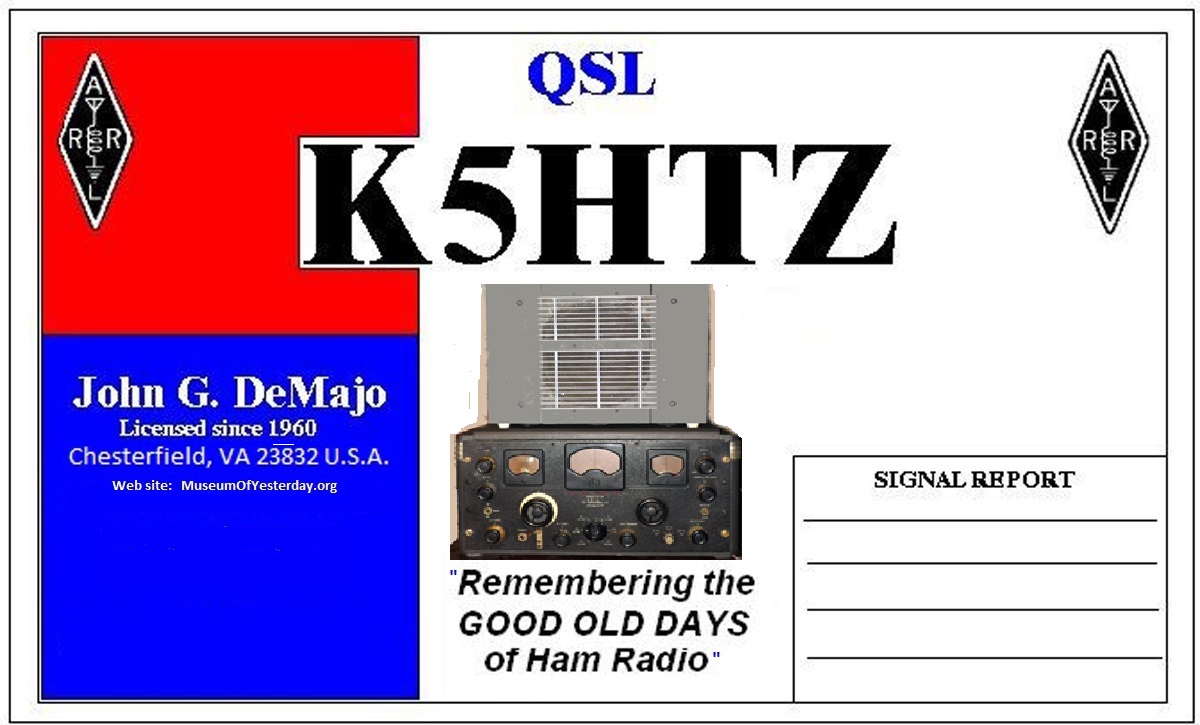
A sample QSL card from our founder's "Ham" radio station, K5HTZ.
While the Museum Of Yesterday's collection contains many general interest items from the 19th and 20th Centuries, the real focus of our collection is communications. The extensive collection of communications devices represents a lifetime of collecting by our founder, engineer and historian John DeMajo. Mr. DeMajo was introduced to, and became interested in electricity and electronics as a young child. His father was an electrical engineer who was instrumental in the development of aids to navigation for the U.S. Coast Guard, and who operated a research lab on the property of the family home in New Orleans. At the young age of 13, he obtained his first FCC radio operator's license, and he also followed a career path as an engineer and contractor. . For over 65 years, his interests have driven him to build a notable collection of items that tell the entire story of radio and communications history. This web site is his way of sharing the collection with interested persons, including engineers, ham operators, teachers, and students of history.
The QSL card, shown above, is a sample of cards that are sent through the mail to confirm that listeners or operators of other stations have actually established radio contact with a subject station. While these cards are highly collectible and still used by many stations, today's technology now permits QSLs to be transmitted through the use of computer programs such as Log Book Of The World, or QRZ.com. To see the latest Log Book Of The World contacts logged by station K5HTZ, click the icon below.

MEMBER 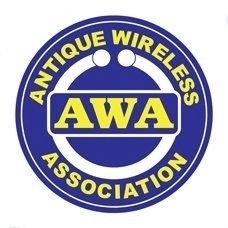 |
MEMBER  |
MEMBER  |
 WE ARE ON THE AIR AND STREAMING ON THE INTERNET
WE ARE ON THE AIR AND STREAMING ON THE INTERNET 
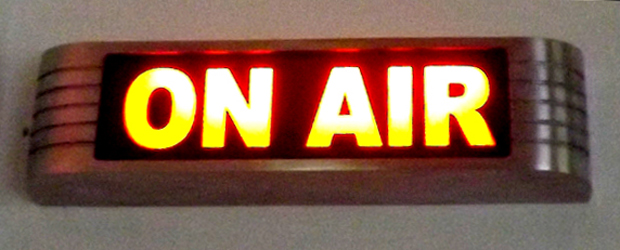
A WORD TO EDUCATORS AND HISTORIANS:
PLEASE NOTE THAT PHOTOS AND INFORMATION PRESENTED ON THIS SITE ARE VERIFIED AS HISTORICALLY ACCURATE. BIBLIOGRAPHICAL INFORMATION IS EITHER INCLUDED, OR IS AVAILABLE UPON REQUEST. IN ADDITION TO PRESENTING THE MUSEUM TO VIRTUAL VISITORS AND COLLECTORS OF ANTIQUE COMMUNICATIONS EQUIPMENT, THE SITE IS DESIGNED TO BE USED BY TEACHERS AND STUDENTS IN HIGH SCHOOL AND COLLEGE LEVEL COMMUNICATIONS COURSES. THE MUSEUM STAFF WELCOMES QUESTIONS AND COMMENTS FROM INSTRUCTORS AND STUDENTS ACTIVELY INVOLVED IN SUCH CARRICULA.
Left: A 1930s photo of staff organist Glen Shelly at the console of the KGW (Portland Oregon) studio Wurlitzer. At Right: The WOLD studio Wurlitzer in a photo that is reminiscent of the 90 year old KGW Shelly photo.
For more information on the WOLD studio Wurlitzer, click on the photo above.
In 1929, Broadcast "entertainment" radio was coming of age at the same time that talking pictures were replacing silent movies in theaters around the country. Thousands of theatre pipe organs had been built and installed in movie theatres through the 1920s, and theater owners were now left with these unneeded obsolete instruments in their venues. Originally, the theatre organ was designed as a one-man orchestra, and was used extensively to save money by eliminating the need for live house orchestras to accompany silent films. Radio, on the other hand, was using orchestras and phonograph transcriptions for background and accompaniment of early radio shows.
It was realized, by enterprising broadcasters, that surplus organs could now be moved to radio studios, and the same concept of a one-man orchestra could be applied to radio productions. Soon hundreds of former theatre organs, and their organists, were finding their way to radio studios across the country.
A comprehensive listing of all known pipe organs and organists associated with radio stations is available. ![]()
You are invited to check out these MP3 samples of radio themes that were created on the WOLD organ shown above. The announcer at the beginning and end of each sample is authentic from transcriptions of the original shows as indicated, but the organ music on the tracks was performed by our chairman and founder, John DeMajo, and dubbed into the original old recordings.
Life in New Orleans
The story of engineer and collector John DeMajo and the founding of the Museum Of Yesterday
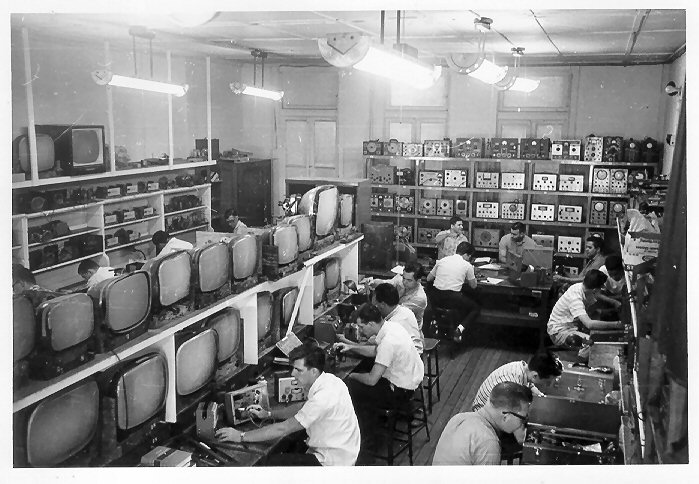
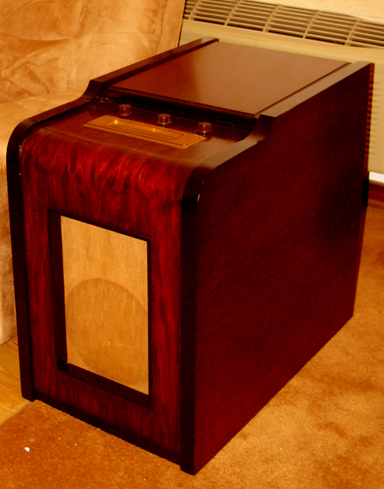
"A LIFETIME FASCINATION WITH RADIO"
Those who were alive in the early years following World War II, were fortunate to have experienced one of the greatest periods of wealth, social and technological development in the history of our country. From 1945 through the beginning of the Korean conflict, America experienced an unleashing of technology that had developed as a result of war efforts. Early in that period, television had not yet entered the average home in America, but everyone knew that this wonderful new medium of "radio with pictures" was coming fast. Prior to the 1950s, the average American family still huddled around their radios for entertainment in the home, and prime-time on the major networks was still well invested in live radio productions.
Back in post World War II New Orleans, the family of our museum founder, John DeMajo, was typical of that early "baby boom" era. Evenings at home in the DeMajo household usually involved gathering around the family's Farnsworth GK267 "chairside" radio-phonograph as the evening's prime time shows, such as "The Adventures of Beulah," "Mr. Keene Tracer Of Lost Persons," "Doctor Christian's Office," and "Life With Luigi" entertained audiences. The quality and variety of program content was excellent as radio writers and producers knew that they would soon be facing stiff competition from Television. During that era, some of the most creative shows were produced and broadcast, and many shows that were successful, were later modified for presentation on television.
Just ten years later in late 1959, entertainment network radio broadcasting vanished, having been replaced by the unprecedented growth of Television as the new home entertainment medium. Thanksgiving week of 1959 saw the end of entertainment network shows produced by CBS, and both Mutual and NBC phased out their radio lineups in that same time period.
Our founder fondly remembers the prosperous years that followed the end of World War II, and his interactions as a young child with his family gathered around the Radio. It is that appreciation for the medium of Radio, often referred to as "The Theatre Of The Mind," that inspired Mr. DeMajo to assemble one of the world's premier collections of communications equipment, documents and memorabilia which has now become the "Golden Age Of Radio" Collection of the Museum Of Yesterday
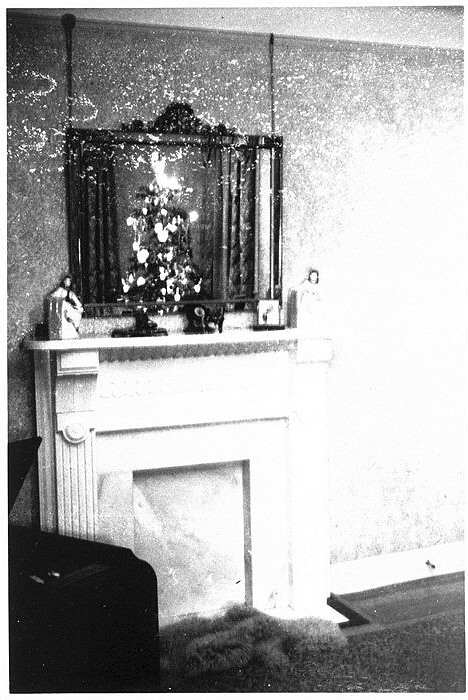 |
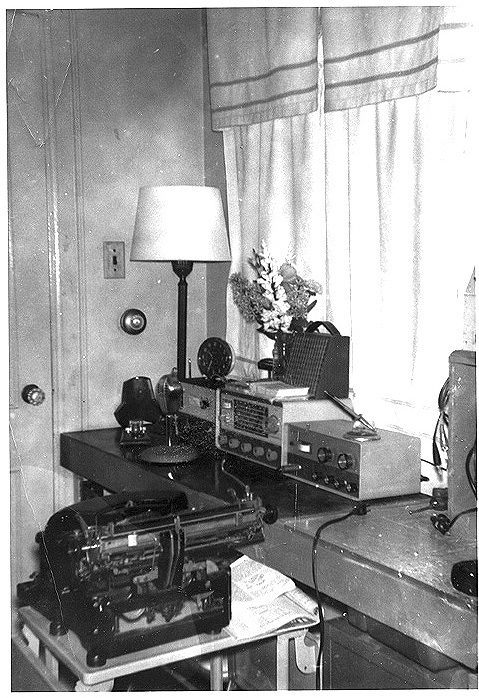 |
To the right is a much later (1962) view of the K5HTZ ham shack at the same residence. This was my station during the years that I was in high school. With this meager installation, comprised of a Knight T-60 transmitter, Hallicrafters SX-140 receiver, and a Johnson VFO, all assembled from kits, I was able to work twenty foreign countries as well as most of the United States and Canada. My antenna at the time was a 40 meter center fed dipole. Sadly, the home was demolished as a result of flooding that accompanied Hurricane Katrina in 2005.

The Birth of the Museum Of Yesterday

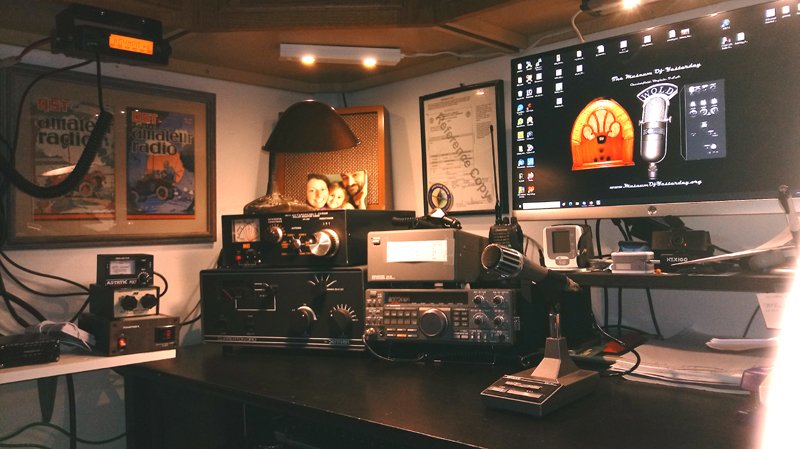
"Central Control" for radio station K5HTZ and the Museum Of Yesterday's communications center.
Following the Hurricane Katrina destruction of the founder's family's home and business holdings in New Orleans, he, along with his remaining family members, made the decision to relocate well outside of the flood prone Gulf Coast of Louisiana. It was during that transition that the concept of "The Museum Of Yesterday" was born. While a substantial portion of the original collection was lost, fortunately, some items were were in safe storage, and thereby escaped damage.
Once the family was settled on the East Coast, he began the task of seeking replacements for lost items. It was then that the idea of establishing a place to display the extensive collection, gave rise to the plan for a privately operated museum. In addition to the new museum being a place for guests to see the collection, our founder insisted that the new facility serve a place where communications students could learn about the history of radio. And being a licensed amateur radio operator who had witnessed what ham radio could do in time of one of the worst weather disasters in history, he decided to establish an emergency communications center as an integral part of the museum displays. As such, the radio station facilities stand ready to assist Virginia Emergency Services , in the event that any future disaster were to result in a total loss of communications, as experienced in Katrina.
Shown above is the new K5HTZ "ham shack" and control center located in the basement of the Museum. The station has a maximum transmitting power of 1200 watts, utilizing both modern solid-state, and restored vintage EMP resistant gear. In addition to emergency communications and amateur radio, the museum operates a full-time low power and Internet streaming radio station, WOLD, for the purpose of broadcasting and streaming nostalgic radio programs of the 1930s through the early 1960s.
Geographically, the station is located 80 miles inland from the Atlantic coast, and our antenna towers reach over 300 feet above sea level, so our RF propagation is excellent both up and down the East coast and over into Europe and to the south-west. Recent contacts have been reliably established with stations as far away as Nova-Scotia to the north, Japan to the west, Kuwait and Qatar to the east, and Ecuador to the south.
Supporting the station's physical plant are a fixed 16KW combination natural gas and propane fired emergency generator, a dedicated Mitsubichi air conditioning system, and multiple Internet connections, all capable of keeping the station operating in even the worst emergency. Having weathered the heart breaking effects of Hurricane Katrina in Louisiana, our founder made a commitment to spare no cost or effort in the creation of a communications center and radio museum that not only serves as a public service resource but also as a teaching facility to promote amateur radio and the study and preservation of the history of American radio broadcasting.
 |
Recently, another member of the founder's family has joined the museum project. We are proud to announce that University Of New Orleans graduate Anthropologist and Museum Specialist Kathleen DeMajo Adams (KN4UMD), daughter of our founder, has obtained her FCC radio license and is now actively involved in the management of the museum and communications collection. |

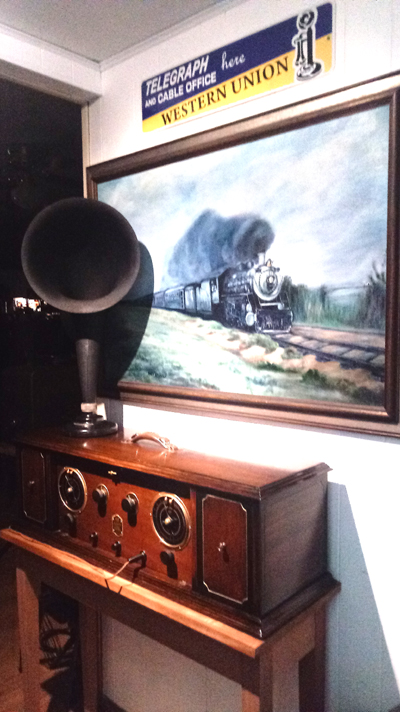
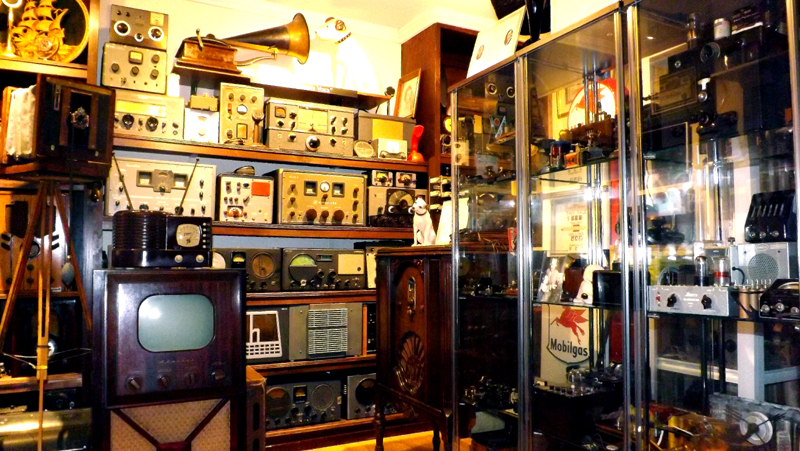
The "OLD IRON" gallery contains classic examples of broadcast and short wave receivers, transmitters and accessories dating from the 1920s through the 1960s.
 |
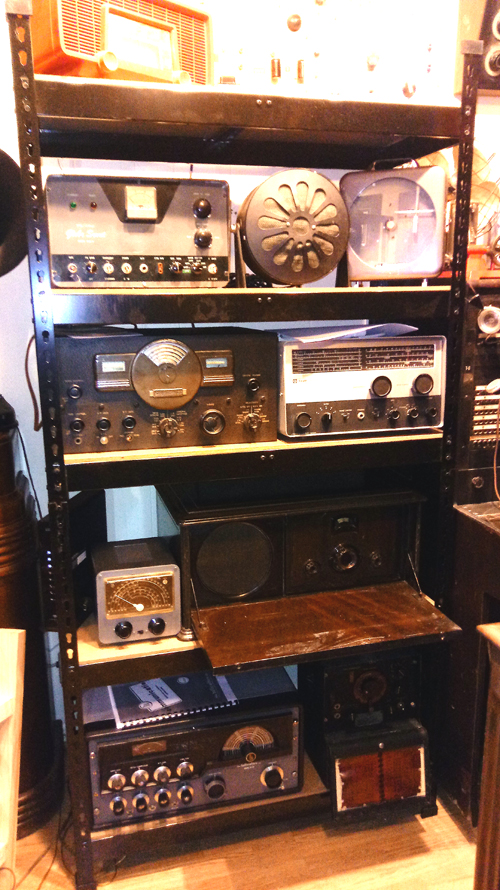 |
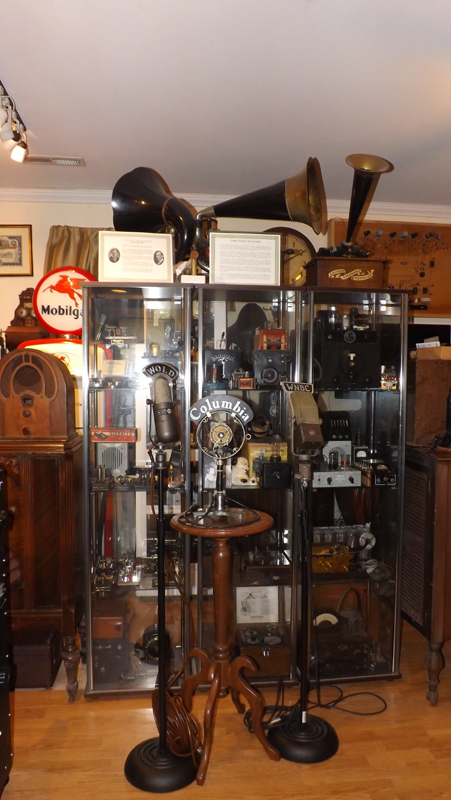
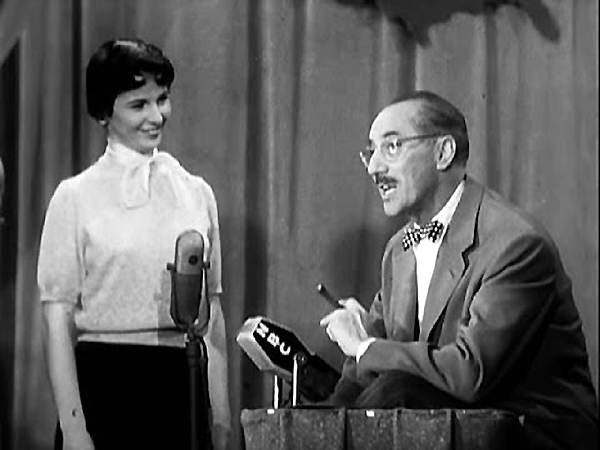 |
In this late 1940s photo of comedian Groucho Marx, with a contestant from his "You Bet Your Life" quiz show series that aired on both NBC Radio and Television at the time, both the RCA 44 and 77 microphones can be seen together in actual use. In the late 1940s and early 1950s, the audio portion of the program aired on NBC Radio on Wednesday evenings, with the same program broadcast on television the following night as part of the Thursday evening prime-time lineup. |
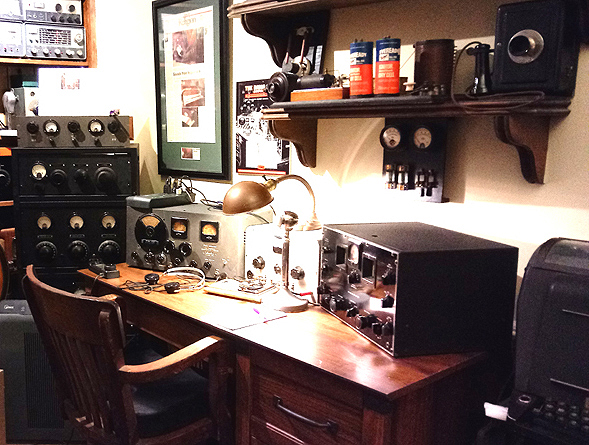 |
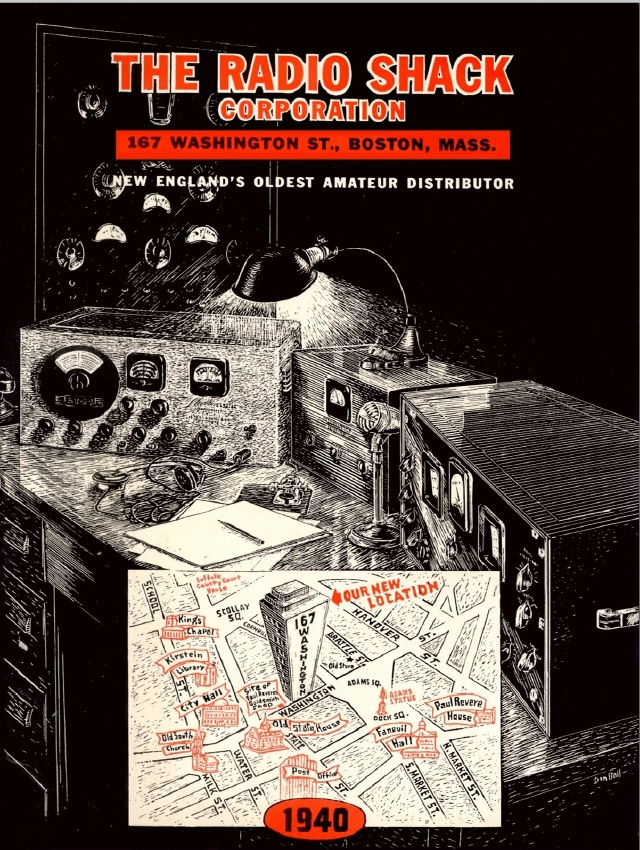 |
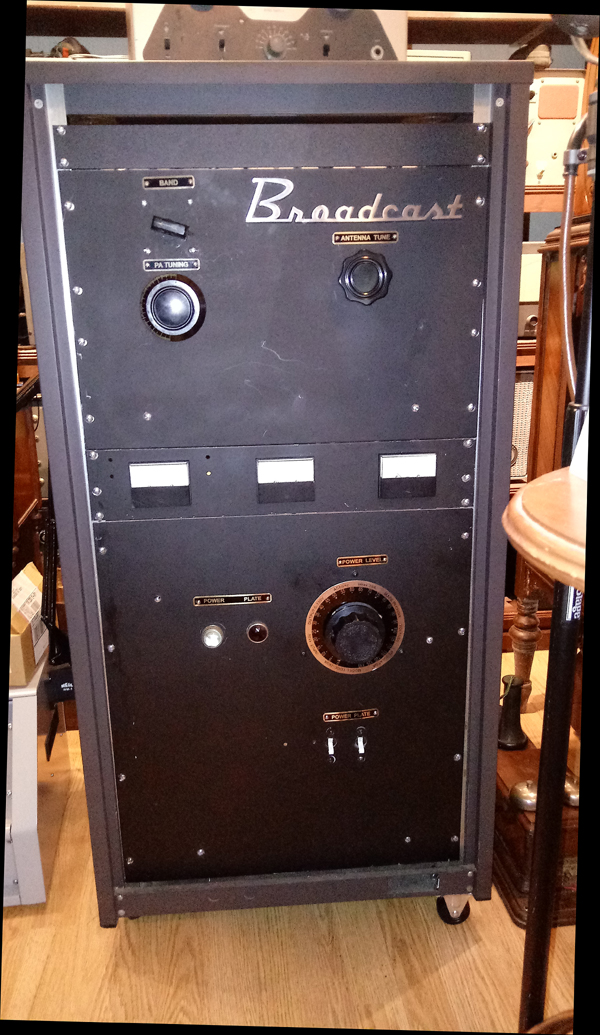
The museum's restoration shop not only allows us to restore and maintain our commercially made antique acquisitions to museum quality, but it also provides a laboratory for the construction and testing of DIY equipment projects that have appeared in radio publications over the years, such as articles that appeared in the ARRL Handbook and QST magazine. By having the ability to reproduce early 20th Century technology from the ground up, we can demonstrate the challenges that early radio hobbyists faced in the days when most hams still designed and built their own station equipment.
Modern RF amplifiers are designed for low duty cycle service in order to make them economical. While this works well with SSB and CW transmissions, which generally utilizes under 30% of the amplifier's full duty rating, AM transmissions require a continuous carrier at full power, which would damage most modern commercially made amplifiers. The circuits in those modern devices are also vulnerable to EMP damage, which could render them useless in EMP type disasters.
The super duty amplifier, shown above, was designed and built by the museum staff, and utilizes actual vintage parts from the 1940s and 50s. It has been fully tested and proven to reliably deliver 100% power output, on a continuous basis, at one-thousand watts. It would be next to impossible to find such a device, in good operating condition today. By having this amplifier available, our communications center has the capability of transmitting on AM for extended periods, thus utilizing the many EMP resistant tube based transmitters and drivers from the collection. Note: Ssome of the components used in the construction, such as the 1KW RCA Broadcast transmitter panel meters, were recovered and recycled from devices that were previously destined for scrap status,
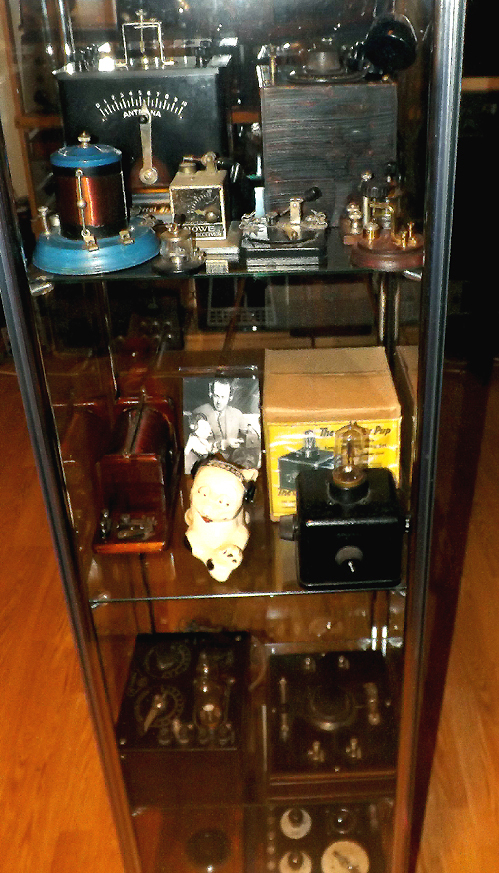 |
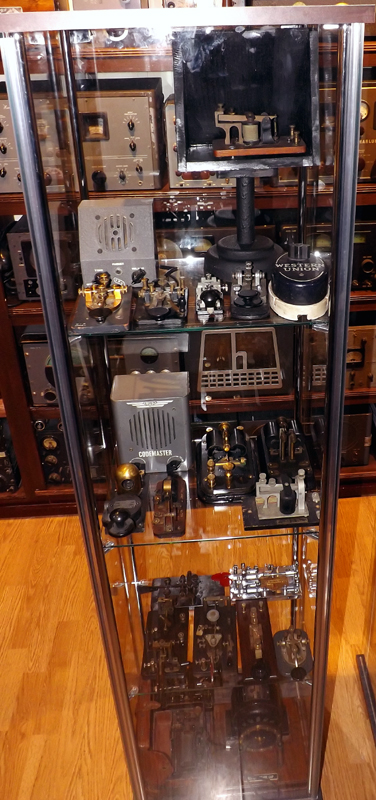 |
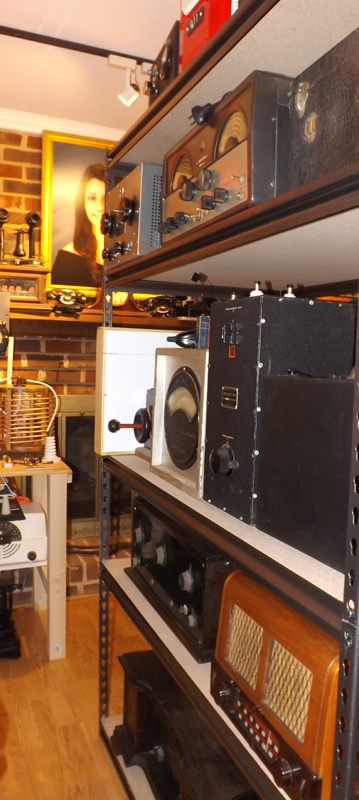 |
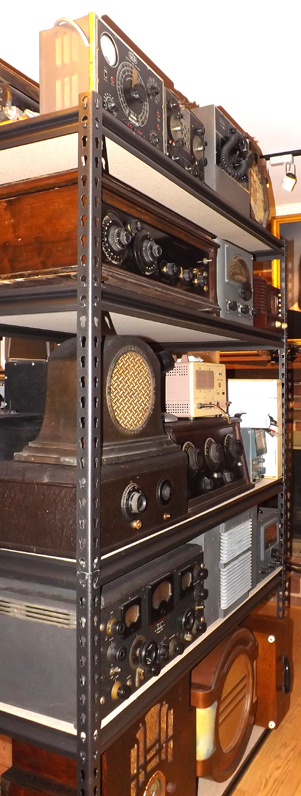 |
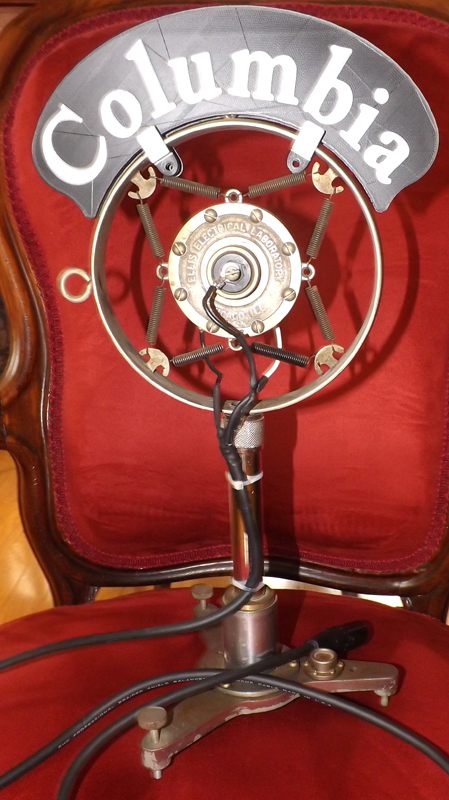 |
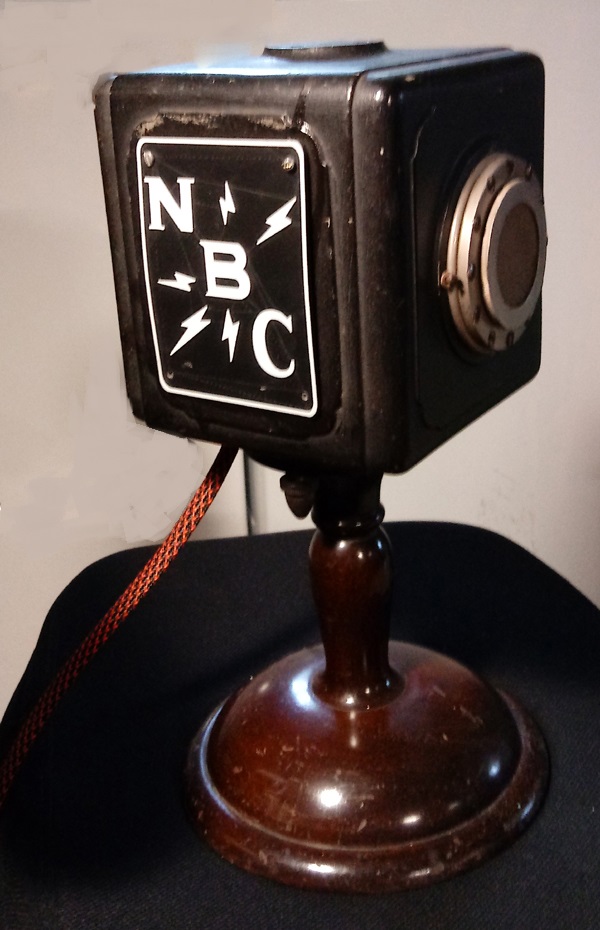 |
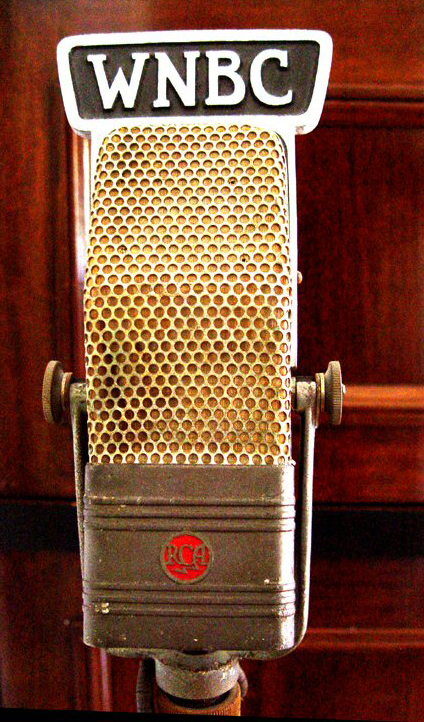 |
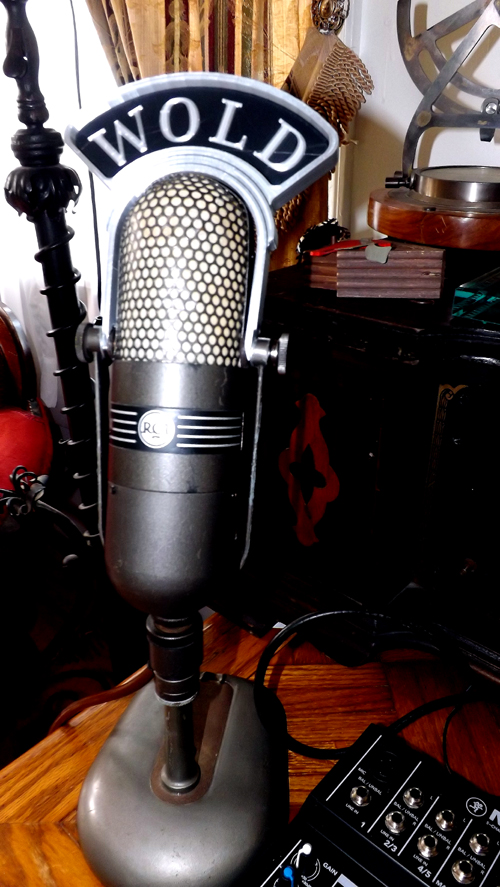 |
To facilitate demonstrations of the museum's huge collection of historic recordings of "golden era" radio programs and vintage audio recordings, and also to encourage theatre group recreations of historic broadcasts, the museum operates a streaming and low power AM radio station with the call letters WOLD. Below is a photo of a typical late 1920s radio studio, followed by a current photo of the main studio of WOLD. Note that the layout and contents of our studio is quite similar to that shown in the historic depiction.
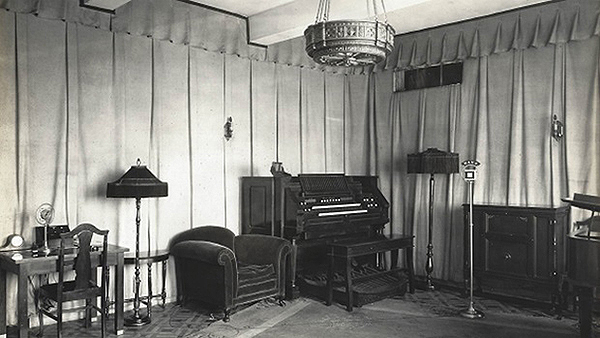

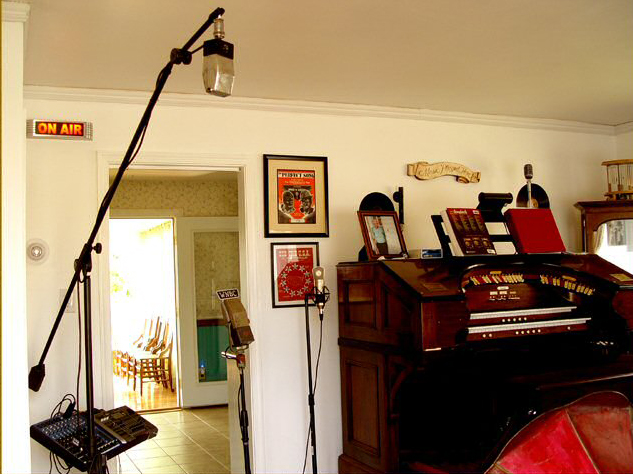
The device above is an early version of the NBC chimes. It was used in productions originating from an NBC affiliate station in Tennessee, believed to be the originating station for the Grand Ole Opry. These Deagan dinner chime units were used throughout the NBC Network until the late 1930s when they were replaced by an electronically generated signature produced at one of the network's headquarter stations. There were several versions of the NBC tone over the years including a five and four note version. By the 1930s, the familiar three note tone became the standard. While the NBC tones became a signature of the network, their original purpose was to notify the engineers, at telephone company switching stations, that a network program was about to go onto the line.
Hear the signature NBC tone from later years, which was electronically generated.
Meet Professor Heindrick Von Kilowatt. He will be your guide to a better understanding of the history and science that you will be seeing in the museum's extensive collection. |
 |



